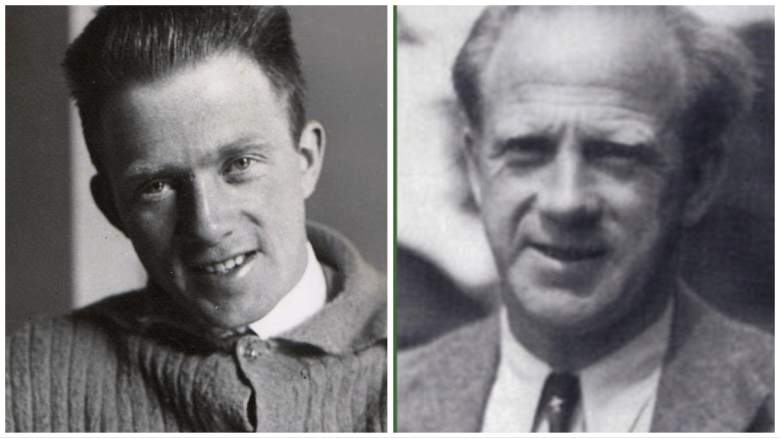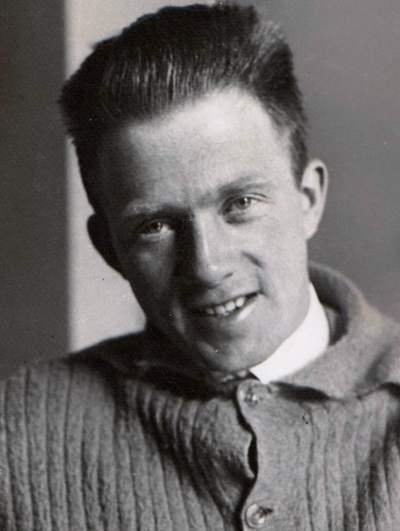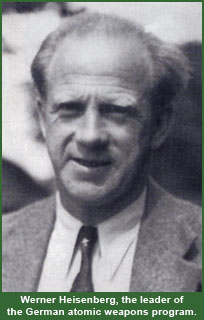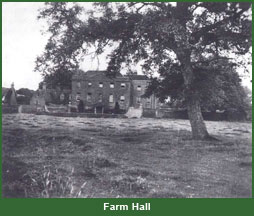
Wikimedia Commons/US Dept of Energy Werner Heisenberg.
Werner Heisenberg was the German scientist in charge of Nazi Germany’s weapons program. But how close were Nazis to getting an Atom bomb?
Heisenberg is featured in the new movie, “Oppenheimer,” about the United States’ Manhattan Project, which worked to develop an Atom bomb before Nazi Germany could do so. The Americans ended up dropping two Atom bombs, decimating the Japanese cities of Hiroshima and Nagasaki. Nazi Germany surrendered before the Americans developed the technology and without Hitler’s Reich ever obtaining nuclear weapons.
Fans of the television show “Breaking Bad” will recall that character Walter White assumed the last name “Heisenberg.”
“Werner Heisenberg was one of the greatest physicists of the twentieth century. He is best known as a founder of quantum mechanics, the new physics of the atomic world, and especially for the uncertainty principle in quantum theory,” the American Institute of Physics writes. “He is also known for his controversial role as a leader of Germany’s nuclear fission research during World War II.”
However, what was the real story of Werner Heisenberg? How close were the Nazis to getting the Atom bomb in real life?
Here’s what you need to know:
Werner Heisenberg May Have Kept Nazi Germany From Getting the Atom Bomb

Wikimedia CommonsWerner Heisenberg.
In the movie, the Americans are worried Nazi Germany is close to getting the atom bomb, but the Nazis weren’t that close in real life.
There is some evidence that Heisenberg purposely prevented that from happening.
“Physicist Werner Heisenberg hid information from Nazi leaders about how to build an atomic bomb,” according to New Scientist.
The U.S. Department of Energy says, “After the war, many other German physicists, including most notably Heisenberg himself, also claimed to have been secretly not trying very hard in their war research. Whether this was an attempt after the fact to excuse their failure and/or justify their work on behalf of the Nazi regime is still a subject of intense debate among historians today.”
The Department of Energy notes:
An incident in September 1941 helps to illustrate the confused and ambiguous nature of possible resistance by German scientists to the German atomic bomb project. Heisenberg, who by this time was the leader of the German effort, asked for a meeting with his old friend and mentor Bohr. According to Heisenberg, he was there to ask Bohr’s opinion of the morality of work on the atomic bomb. For his part, Bohr wanted no part of German atomic research and was careful to say nothing of importance. Heisenberg did tell Bohr of Germany’s atomic research and even passed to Bohr a diagram of the German pile in Berlin, but whether he did so in order to warn Bohr, and hence the Allies, or only to get Bohr’s advice (or even mislead him), it is impossible to know.
According to the Atomic Heritage Foundation, Heisenberg, who died in 1976, “was a German theoretical physicist and 1932 Nobel Prize winner.”
“Heisenberg was a main contributor to the German atomic program during World War II, in direct competition with the Manhattan Project,” the site explains.
According to that site, Heisenberg told Nazi leader Albert Speer that the Nazis could not build a bomb before 1945, and it “would require significant monetary and manpower resources.”
German scientists “focused their efforts on more pressing matters which would have an immediate impact on the war,” the site reports.
Starting in 1944, the United States “took numerous German nuclear scientists into custody,” and Heisenberg was held at Farm Hall in England with other prominent German physicists, according to the site.
According to the U.S. Department of Energy, “Comparatively little progress was made toward a German atomic bomb from about 1942 onwards. Many German scientists, including Heisenberg, continued to make pleas for greater government funding, but as the war turned against Germany, it increasingly focused its science and industry on more immediate war needs.”
The German Atomic Weapons Program Started With a Secret Conference in Berlin, Germany, in 1939

U.S. Department of EnergyWerner Heisenberg
According to the U.S. Department of Energy, “The German atomic weapons program began with a secret April 1939 conference in Berlin, which resulted in the Ministry of Education initiating a formal uranium research program and banning the export of uranium to other nations.”
The “German Manhattan Project” launched five months before Albert Einstein wrote President Franklin D. Roosevelt about the danger that Nazi Germany could develop the bomb, the Department of Energy says.
It notes:
Although there was no way for the Americans to know it at the time, scientists in the United States began in around 1941 to pull far ahead of their counterparts in Germany. In January of that year, a physicist by the name of Walter Bothe made a critical miscalculation that caused Germany to mistakenly rule out graphite as a possible moderator. . . .
As for the uranium path to the bomb, German researchers concentrated most of their early isotope separation effort on theLiquid thermal diffusion method for the enrichment of uranium. inefficient thermal diffusion method (left). After this was eventually abandoned, they concluded that the other methods of producing weapons-grade uranium would only be possible at a very great expense and with no assurance of success.
Werner Heisenberg Said Nazi Germany Never Embarked on a Full-Scale Bomb Program

US Department of EnergyFarm Hall, where Heisenberg was held.
According to New Scientist, Heisenberg “wrote in Nature that there were simple practical reasons why Germany never embarked on a full-scale bomb programme. Under wartime conditions, it would have been impossible to build the huge industrial infrastructure of the US’s Manhattan Project. But he also wrote that the physicists themselves ‘had consciously striven to keep control of the project’ and avoided work on a bomb, preferring to work on reactors and cyclotrons.”
Heisenberg is a Nobel Prize winner, according to the Atomic Heritage Foundation. “Heisenberg is best known for his uncertainty principle and theory of quantum mechanics,” it reports.
According to PBS, after the war, Heisenberg “was released and returned to Germany where he reestablished the Kaiser Wilhelm Institute for Physics, but renamed it the Max Planck Institute, in honor of his friend and colleague. He held many administrative posts in West Germany and represented his country at international meetings. He retired in 1970, and died in 1976 survived by his wife of 39 years and seven children.”
READ NEXT: The Real Story of J. Robert Oppenheimer.